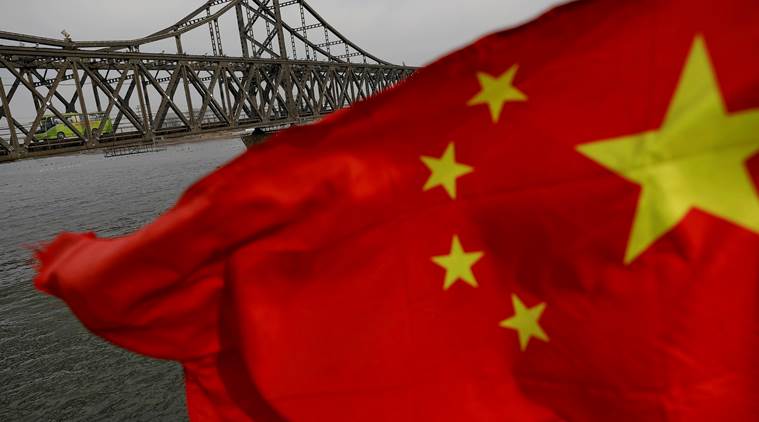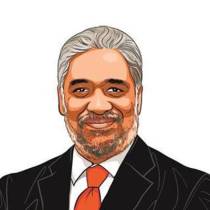Raja Mandala: South Pacific Silk Roads
China is challenging the dominance of Australia and New Zealand in the region. India can increase its own impact by strategic collaborations.

If India took its primacy in the Subcontinent for granted, so did Canberra and Wellington in the South Pacific. Now, all three are scrambling to deal with China’s projection of economic and political power into their backyards.
India is not the only one struggling to cope with China’s Silk Road ambitions. Down under, Australia and New Zealand are finding that China has begun to undermine their long-standing dominance over the South Pacific. If India took its primacy in the Subcontinent for granted, so did Canberra and Wellington in the South Pacific. Now, all three are scrambling to deal with China’s projection of economic and political power into their backyards.
The trend lines are quite similar. Consider, for example, Delhi’s concerns about the strategic implications of China’s port building in Gwadar (Pakistan) and Hambantota (Sri Lanka). Australia is worried that China is pushing for a military facility in Vanuatu. Located north east of Australia, Vanuatu’s population is barely 2,50,000 people, but its 80 islands generate a massive exclusive economic zone.
As a rising maritime power, China’s rising profile in the South Pacific Islands is not very different from its growing strategic interest in the Indian Ocean islands including Madagascar, Mauritius, Seychelles, Maldives and Sri Lanka. All great maritime powers seek forward bases. China’s military base in Djibouti, in the Horn of Africa, is a first for Beijing. It certainly won’t be the last.
It is not that China had hidden its intentions. At the turn of the millennium, China had unveiled an ambitious project on developing its periphery in the far west and south-west. The emphasis was on promoting massive connectivity projects within China and then extending them across the border into the neighbouring countries. Soon after, Beijing unveiled a bold naval strategy that was in tune with China’s emergence as the world’s second-largest economy.
As China came to terms with the fact that its economic and political interests were no longer confined to its borders, it began to develop maritime infrastructure around the world, including in India’s immediate neighbourhood. It also began to create the military and other capabilities to secure its globally dispersed interests.
Well before President Xi Jinping brought it all together under the Belt and Road Initiative in 2013, many major projects began to inch towards the Subcontinent. These included the Tibet railway, modernisation of the Karakoram Highway, and building strategic ports like Gwadar and Hambantota. Well beyond the Subcontinent that borders China, Beijing significantly expanded its economic engagement and security diplomacy in the island nations across the Indo-Pacific.
China was doing what is right for itself and efficiently addressing the imperatives that emerged along with its rise on the world stage. The real problem was the inability of Delhi, Canberra and Wellington to appreciate China’s entirely legitimate aspirations to become a great global power and assess the strategic consequences for their own respective regions. They also failed to see that Beijing had no reason to respect the claims of Delhi, Canberra and Wellington for “exclusive spheres of influence”.
It was only in the summer of 2017, under great pressure from China to attend the first Belt and Road forum, that India articulated a comprehensive critique of Beijing’s infrastructure projects in its neighbourhood. And it is only in the last few months that the governments of Australia and New Zealand have begun to publicly question China’s strategic motivation in the South Pacific.
A defence policy review issued in Wellington last month underlined that China’s growing economic and political profile in the South Pacific could unravel the regional order and threaten New Zealand’s security. Pointing to the consequences of China’s lending policies in the South Pacific, Australian foreign minister Julie Bishop insisted in June that Canberra will “ensure” that the South Pacific Island states “retain their sovereignty, that they have sustainable economies and that they are not trapped into unsustainable debt outcomes”.
Signalling the new political resolve to contest Beijing’s influence in the region, Canberra recently scuttled a bid by China’s Huawei to build an undersea internet cable between Australia, Solomon Islands and Papua New Guinea. Recognising the potential dangers of the region being tied into China’s digital silk road, Canberra chose to put up the entire cost of the project estimated at $100 million.
Shedding their complacency, Canberra and Wellington are now boosting their economic aid to the island nations. Australia and New Zealand are also preparing to sign a wide-ranging security pact with South Pacific nations at a summit with the leaders of the islands in Nauru in September. Canberra and Wellington are also upgrading their national surveillance capabilities in the South Pacific.
But China is not about to give up. President Xi Jinping is hosting a second summit with the leaders of the Pacific Island nations in Papua New Guinea on the margins of the APEC summit in November. Four years ago, in November 2014, the paths of Xi and Prime Minister Narendra Modi crossed in Fiji, when they both held summit meetings with the islanders. Since then, China’s salience in the South Pacific has grown at great speed. But the Indian strategic promise in the South Pacific remains to be realised.
While India’s resources will always be limited, it can increase its impact in the region through collaboration with its partner countries like Australia, France, Indonesia, Japan, New Zealand and the US — all of whom have great stakes in the South Pacific. Promoting practical cooperation with these nations could be far more productive than Delhi’s theological discussions about the quad, the Indo-Pacific and the BRI.
The writer is director, Institute of South Asian Studies, National University of Singapore and contributing editor on international affairs for The Indian Express
For all the latest Opinion News, download Indian Express App
More From C. Raja Mohan
- Raja Mandala: Imran Khan’s Afghan callPakistan’s new PM might find himself valuable to Islamabad’s major interlocutors, especially the US, who are keen to reconcile with Taliban...
- Why Imran Khan may have less of a chance orchestrating new thinking on IndiaThe election of Imran Khan makes little difference to India policy which is controlled by the army and the so-called state institutions. ..
- Raja Mandala: Trailing ChinaDelhi cannot match the resources that Beijing has deployed in Africa. But it cannot ignore gap between promise and performance in its engagement...







































No hay comentarios:
Publicar un comentario